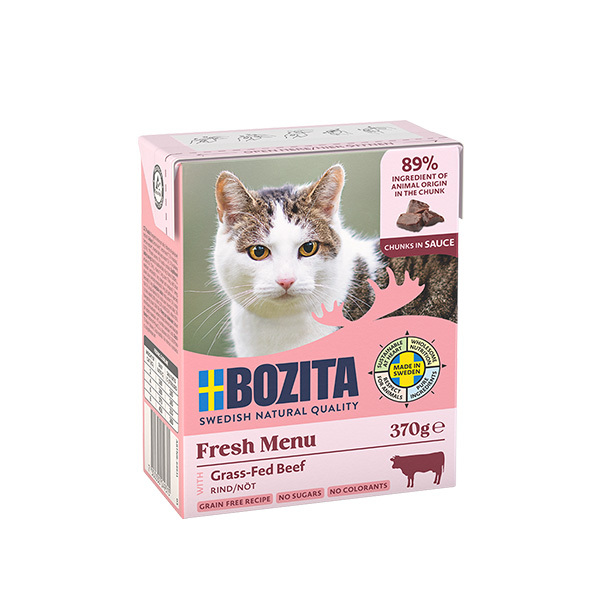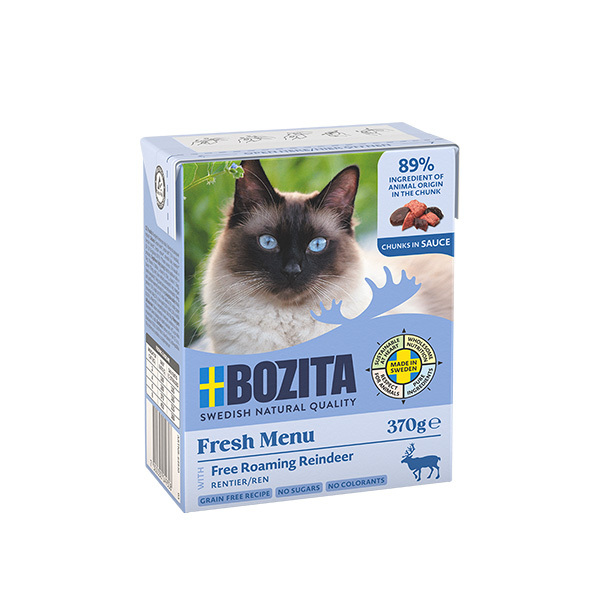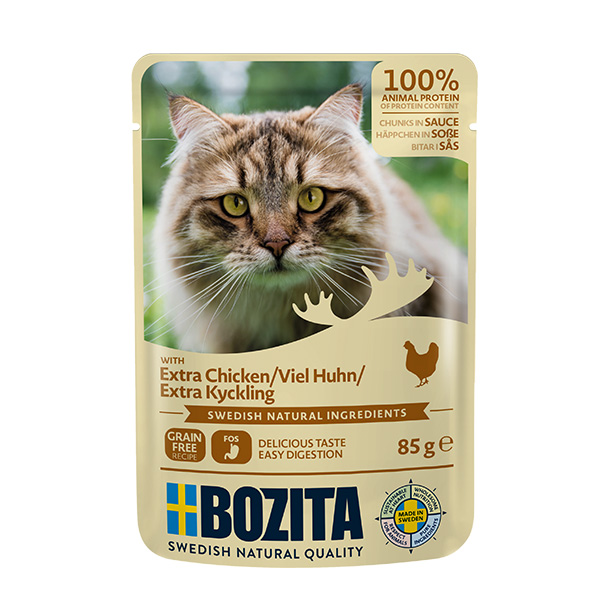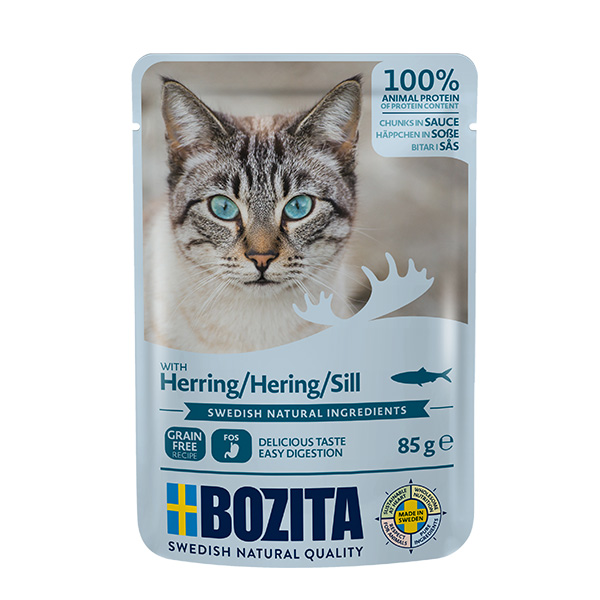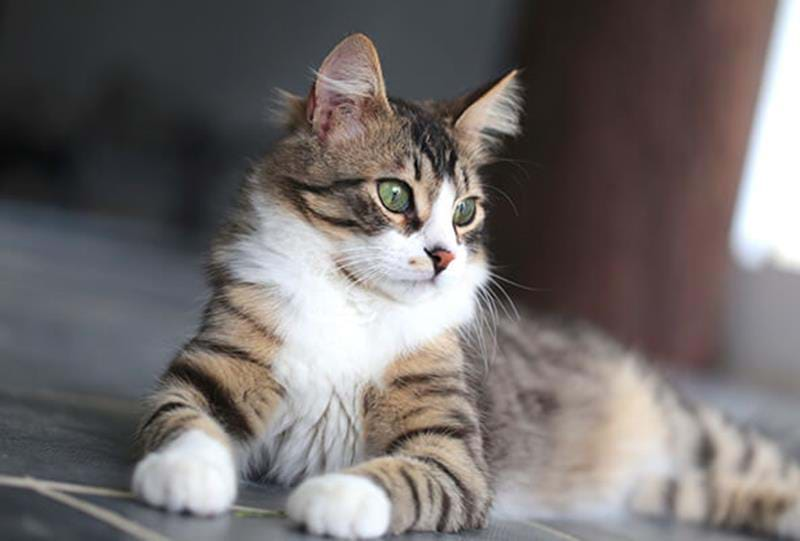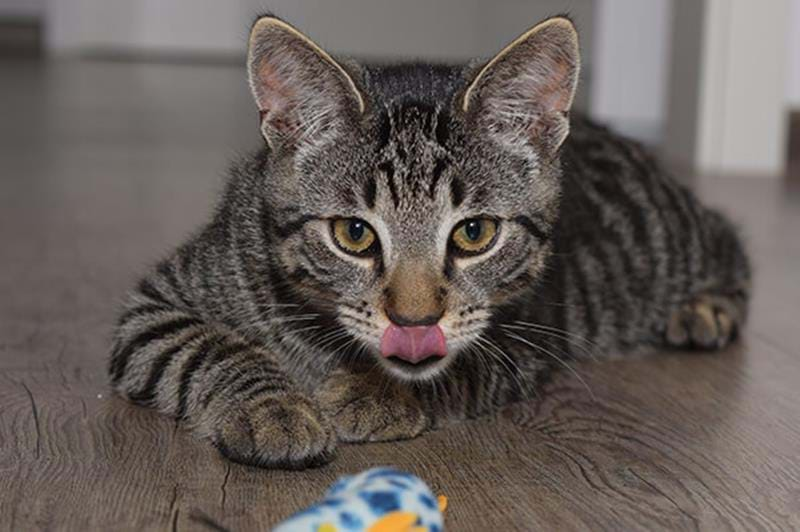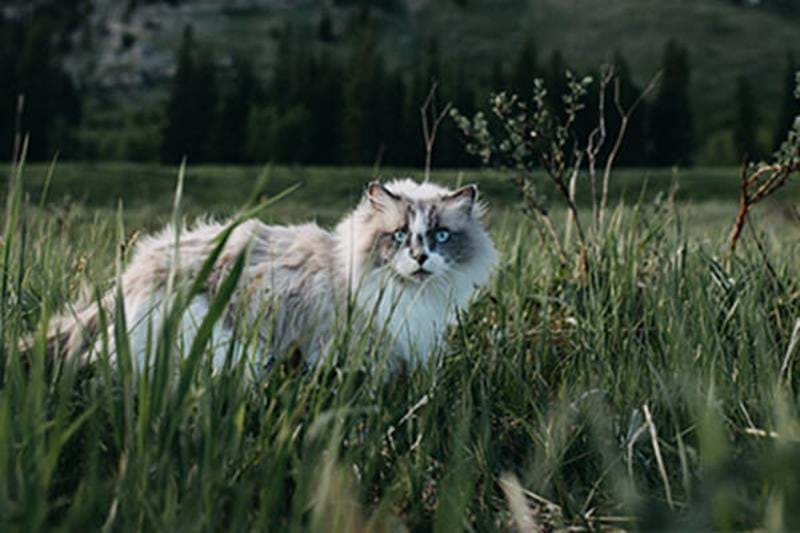If you have a kitten or adult cat that doesn’t eat or drink enough, you need to find the underlying cause of the problem. It’s important to find out if your cat’s poor appetite is caused by not wanting to eat or not being able to eat.
The article is based on conversations with Bozita’s own cat expert Elin Hirsch, doctor in ethology with a focus on cat behaviour.
TEACH YOUR CAT GOOD EATING HABITS
Help your cat develop healthy eating habits from the start by setting up a routine. Whether you let your cat have free access to food or serve the food at certain times, it is important to stick to the routine. Otherwise you risk having a cat that refuses food or doesn’t eat enough. If you have a cat that doesn’t eat it’s not a good idea to try and tempt them with delicious food or treats. That will teach it to be picky. Allow the cat to go hungry for a few hours and they will hopefully learn to eat what you provide.
FIND OUT WHY YOUR CAT ISN’T EATING OR DRINKING
It is important to distinguish whether the cat isn’t eating because of food related factors, or if they are in pain or have an illness. Observe how your cat behaves generally – is it lethargic, constipated or sleeping more than usual? This is especially important as your cat becomes older. Sense of taste and smell deteriorates with age, which can contribute to a reduced appetite. If you have an outdoor cat, it can be harder to keep track of exactly what they eat during the day. Maybe they have caught a bird or mouse and feel full. On the other hand, if your cat hasn’t eaten for 24 hours or more, you should contact a vet. Refusing to eat for more than a day can have serious consequences.
ENCOURAGE YOUR CAT TO EAT AND DRINK
Imitating how cats eat and drink in the wild is a great way to pique their appetites. Cats don’t regulate how much they drink according to the liquid in their food, which can increase the risk of urinary stones for cats that only eat dry food. Here are some tricks to try to get your cat to eat
- Separate food, water, litter tray and playing If you have a cat that doesn’t eat or drink, you should separate food, water, litter tray and play to reflect what cats do in the wild. You can also stimulate the cat’s appetite by placing water in several places in the house. Avoid placing water directly near the food bowl and litter tray. Cat’s don’t usually want to drink in the same place as their food bowl and litter tray.
- Give a cat that’s not eating an undisturbed area to eat Make sure the cat has a private, safe and undisturbed dining area where it can eat in peace and quiet without stress. It might want to eat in private.
- Keep food utensils and food area clean Always serve the food in clean food bowls and clean the dining area frequently with a mild detergent. This will encourage your cat to eat. It will also protect it from bacteria that can build up in the food area.
- Serve food in the “right” bowl Think about what your cat likes to eat and drink from. For example, many cats don’t like their whiskers touching the edges of the food or water bowl and many cats prefer running water. Experiment to see what works best when your cat isn’t eating or drinking. Investing in a water fountain and offering your cat water in several places in the home can increase the chances of your cat drinking enough.
- Taste, consistency and smell Choose a food that is tasty and easy to eat, ie food with a texture that the cat likes with reasonably large pieces. Try warming the food for a few seconds. This will make the food smell nice and tempt your cat’s appetite. Cat’s eat their food at room temperature in the wild.
- Wet food is a good source of liquid If you want to make sure that your cat is getting plenty of fluids, we recommend switching to wet food that naturally contains a much higher amount of water. Or complement your dry food with wet food on the side. Cats appreciate a varied menu!
- Check how the food is stored Dry food absorbs moisture, especially when it is humid, which can make it less appetising. Always store dry food in a dry and cool place and check the quality at regular intervals.
- Smaller portionsTry to divide food into several smaller meals that you serve regularly so that the cat does not have to eat so much at once. This mirrors the cat’s natural feeding behaviour with frequent small meals.
IF YOUR CAT CONTINUES TO REFUSE FOOD
If nothing helps, change the food. Sometimes changing the meal is all you need. If possible, make the transition from the old to the new food slowly so that the cat does not get an upset stomach. Further reading





